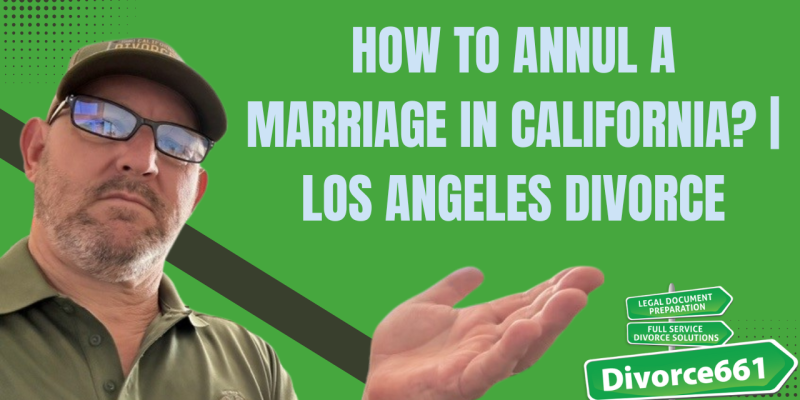How to Annul a Marriage in California?
What is an annulment and how is it different from divorce?
An annulment is different from a divorce. Instead of ending a valid marriage, it legally declares that the marriage was never valid to begin with.
An annulment does not simply terminate a marriage the way a divorce does. It treats the marriage as if it never existed in the first place. Because of that legal effect, annulments are only granted in very limited and specific circumstances under California law.
Common grounds for annulment in California
Annulments are rare because they require proof that something was fundamentally wrong with the marriage from the start. Typical grounds include:
- Bigamy – One spouse was already legally married to someone else at the time of your marriage.
- Fraud – One spouse obtained your consent by misrepresenting something essential to the marriage. The misrepresentation must be material and have directly influenced your decision to marry.
- Force or duress – You were compelled to marry under threats or coercion.
- Underage marriage – One or both parties were below the legal age to marry and did not have valid parental or court authorization.
- Mental incapacity – One spouse was mentally unable to understand the nature of the marriage at the time the marriage occurred.
What proof do you need?
Because annulments erase the marriage, the court requires convincing evidence that one of the qualifying grounds existed at the time of marriage. Typical evidence can include:
- Official records such as a prior marriage certificate to prove bigamy
- Witness statements, text messages, emails, or recordings that support claims of fraud or coercion
- Medical or psychiatric records that relate to mental incapacity
- Birth records or other identification documents that show age
Every case is different. The strength and type of evidence needed depends on the ground you are asserting.
Real client example
We recently helped a client who discovered their spouse was legally married to someone else. That is a clear ground for annulment. We filed the appropriate paperwork, explained the situation to the court, and the marriage was voided without going through the full divorce process. The difference in this case was straightforward documentation of the existing marriage.
How the annulment process usually works in California
While each case can vary, the basic steps are:
- Determine eligibility – Review the facts to see if you meet one of the limited statutory grounds for annulment.
- Gather evidence – Collect documents, records, and witness information that prove the ground for annulment.
- File the correct paperwork – Submit the petition and supporting documents to family court. Proper filing is important to present the claim clearly to the judge.
- Provide notice – The other party must be served notice of the petition and given an opportunity to respond.
- Attend the hearing – Present evidence and arguments to the court. The judge will decide whether to grant the annulment.
An annulment can sometimes be quicker than a contested divorce, but you still need to present your case to the court. If children, property, or support issues exist, those matters may still require court resolution even if the marriage is annulled.
When annulment is not an option
Many situations do not meet the narrow grounds for annulment. If your situation does not qualify, a standard divorce will be the correct path. Divorce addresses dissolution of a valid marriage and resolves property division, spousal support, child custody, and child support in the normal way.
How we can help and next steps
If you think your marriage may have been legally invalid, start by getting a clear evaluation of the facts. We help determine whether an annulment is possible and guide you through the filing process when it is. If an annulment is not an option, we can help you transition to a standard divorce and handle the paperwork and court procedures.
To explore your options and get a free consultation, visit divorce661.com. We will help you figure out the best path forward with clarity and confidence.
Key takeaways
- An annulment declares a marriage never valid and is only allowed in limited situations.
- Common grounds include bigamy, fraud, force, underage marriage, and mental incapacity.
- Strong evidence and correct paperwork are essential to succeed.
- If an annulment is not available, a divorce will resolve the end of the marriage and related issues.
- For a free consultation, visit divorce661.com.


